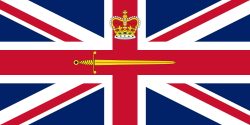| Lord-Lieutenant of Greater Manchester | |
|---|---|
 | |
Incumbent since 4 July 2022Diane Hawkins | |
| Style | Lord-Lieutenant |
| Inaugural holder | Sir William Downward 1 April 1974 |
| Formation | 1 April 1974 |
| Website | Lord-Lieutenancy |
| This article is part of a series on |
| Politics of the United Kingdom |
|---|
 |
The Lord Lieutenant of Greater Manchester is the representative of the monarch, King Charles III in the metropolitan county of Greater Manchester in North West England. [1] As Greater Manchester remains part of the Lancashire County Palatine, the Lord Lieutenant is appointed by the monarch in their capacity as Duke of Lancaster.
Contents
The office was created on 1 April 1974. [1] Before 1974 the area had been covered by the Lord Lieutenant of Lancashire, the Lord Lieutenant of Cheshire, and a small part by the Lord Lieutenant of the West Riding of Yorkshire. The role of the Lord Lieutenant is to "first and foremost ... to uphold the dignity of the Crown". [1] The Lord Lieutenant also acts as Keeper of the Rolls. [1] It also promoted the work of voluntary service and benevolent organisations.
The Lord Lieutenant is aided in his office by over seventy deputy lieutenants. [1]

